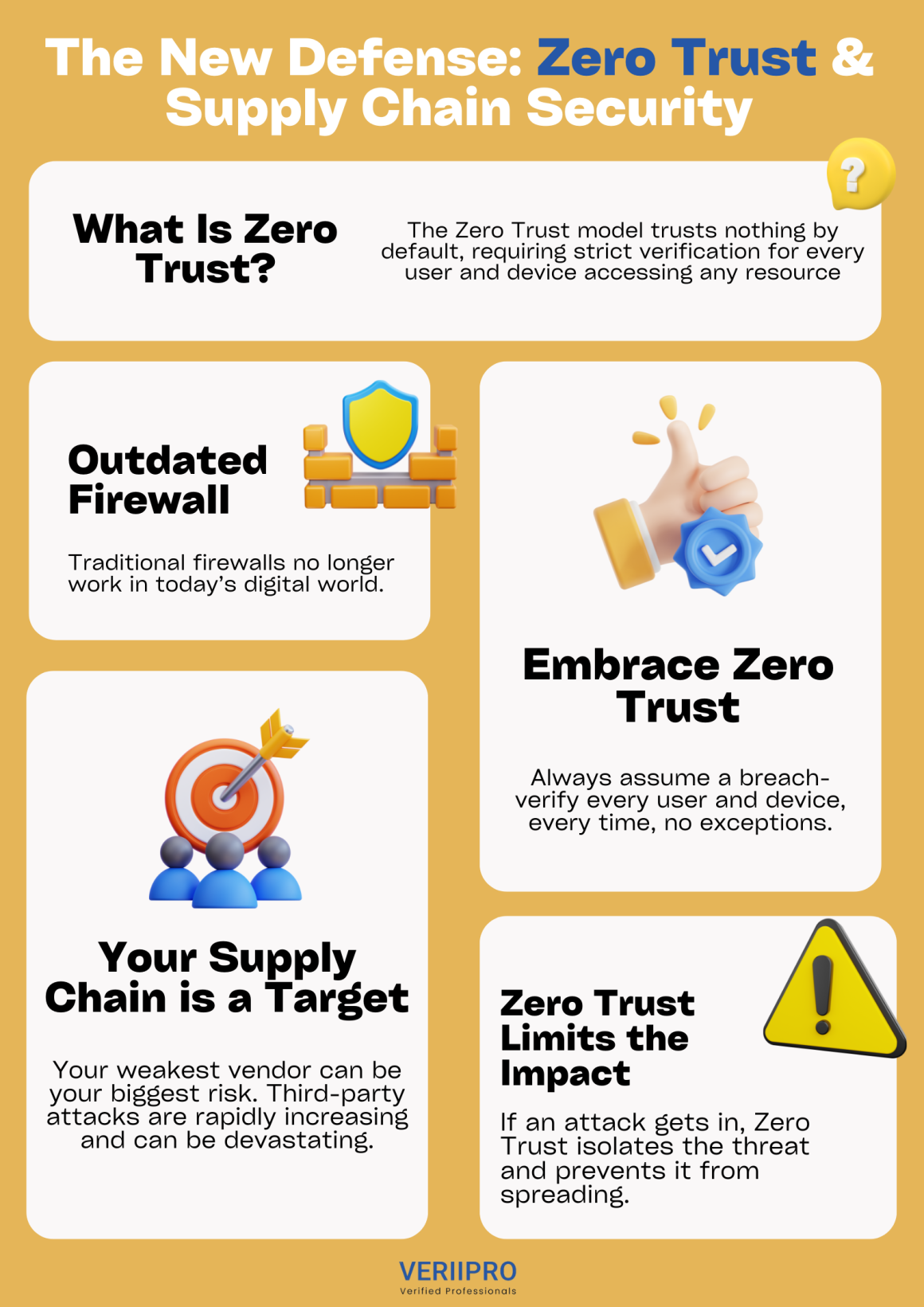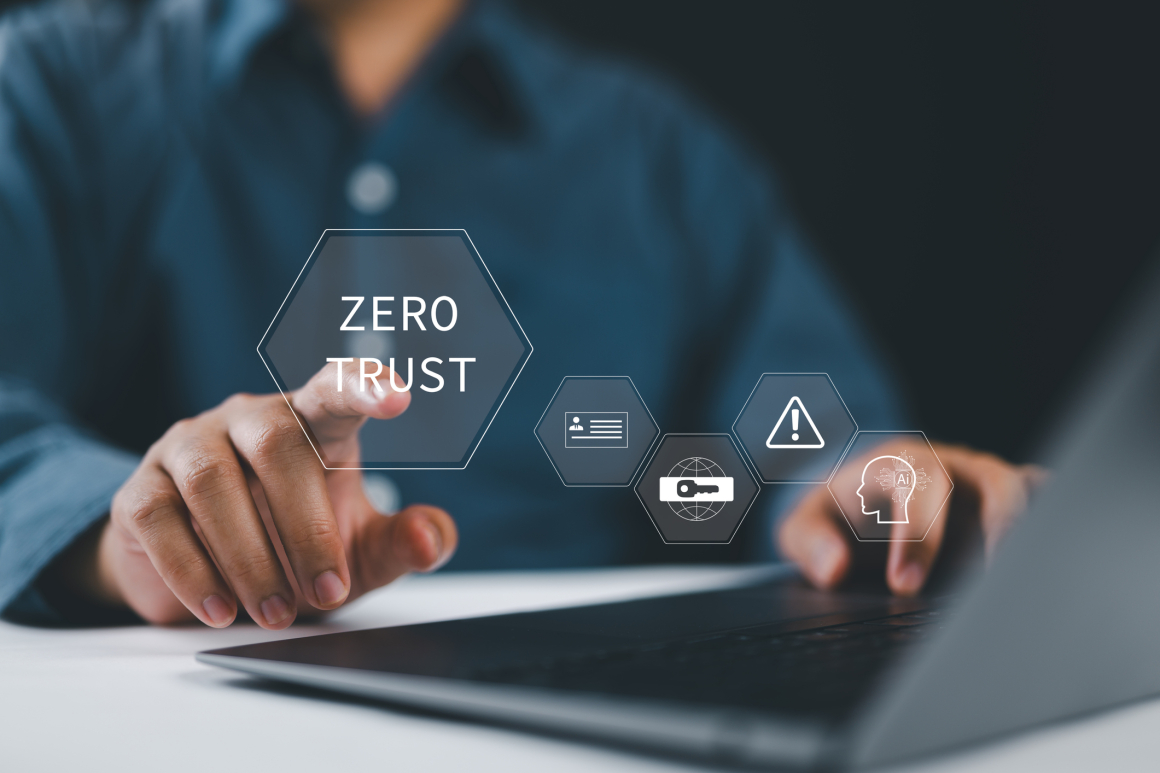Beyond the Firewall: Why Zero Trust and Supply Chain Security are Your New Essentials
Remember the old days of cybersecurity? We imagined our company’s network as a medieval castle. We built a massive wall (the firewall), dug a deep moat, and figured as long as we kept the bad guys out, everything inside was safe and sound. It was a simple, comforting image. Unfortunately, in today’s digital world, that castle has a thousand backdoors, secret tunnels, and a workforce that teleports in and out every day. The old “castle-and-moat” model is broken.
The perimeter we once guarded so carefully has dissolved. With the rise of cloud services, remote work, and interconnected applications, there is no longer a clear “inside” and “outside.” Threats don’t just knock on the front door anymore; they sneak in through trusted partners, third-party software, and even your own employees’ devices. According to a 2023 IBM report, the average cost of a data breach has hit an all-time high of $4.45 million. It’s clear that relying on a strong perimeter alone is like locking your front door but leaving all the windows wide open.

Enter Zero Trust: The “Never Trust, Always Verify” Mindset
This is where the Zero Trust security model comes in. The name sounds a bit intense, but the concept is brilliantly simple: assume your network has already been breached. Instead of trusting anything inside the firewall by default, Zero Trust operates on the principle of “never trust, always verify.” Every single request for access, no matter where it comes from, must be rigorously authenticated and authorized before it’s granted.
Think of it like the security at a top-secret government building. It doesn’t matter if you’re the director or an intern; every time you move to a new area, you have to swipe your badge and prove you have clearance for that specific room. According to the National Institute of Standards and Technology (NIST), this approach is built on several key ideas:
- Identity Verification: Continuously verify the identity of users and devices, often using multi-factor authentication.
- Micro-segmentation: Break down the network into tiny, isolated zones. If one area is compromised, the breach is contained and can’t spread to the entire system.
- Least Privilege Access: Grant users and applications only the bare minimum level of access they need to do their job, and nothing more.
By implementing a Zero Trust framework, you dramatically reduce an attacker’s ability to move laterally within your network. Even if they get in, they’re trapped in a tiny, secure box with nowhere to go, preventing a minor intrusion from becoming a catastrophic, company-wide disaster.
The Hidden Frontline: Securing Your Digital Supply Chain
Now, let’s talk about how attackers are getting in. One of the most insidious and rapidly growing threats is the software supply chain attack. We don’t build all our software from scratch anymore. We rely on a complex web of third-party vendors, open-source libraries, and integrated applications to run our businesses. Your security is no longer just about what you build; it’s about what you use.
The infamous SolarWinds hack of 2020 was a terrifying wake-up call. Attackers didn’t target thousands of individual companies. Instead, they injected malicious code into a software update from a single, trusted IT management company, SolarWinds. When thousands of its customers—including U.S. government agencies—installed the legitimate update, they unknowingly installed a backdoor for the hackers.
This is the modern battlefield. A recent report revealed that software supply chain attacks grew by over 740% annually over the last three years. To defend against this, businesses must become relentlessly vigilant about their digital supply chain. This means:
- Vetting Vendors: Scrutinizing the security practices of every software provider you partner with.
- Using a Software Bill of Materials (SBOM): Maintaining a detailed inventory of every component and library that makes up your software, so you know exactly what’s running in your environment.
- Continuous Monitoring: Actively scanning for vulnerabilities in third-party code and ensuring all components are up-to-date.
A Powerful Partnership for a Resilient Future
Zero Trust and supply chain security aren’t separate strategies; they are two sides of the same coin. A strong supply chain security posture helps prevent threats from getting in, while a Zero Trust architecture ensures that if a threat does slip through via a compromised piece of software, the damage is immediately contained.
If the victims of the SolarWinds attack had robust Zero Trust models in place, the malicious code from the update would have been severely restricted. It wouldn’t have been able to access sensitive data or move freely across the network, turning a potentially devastating breach into a manageable security incident.
The digital landscape has changed for good. Building taller firewalls is a losing game. The future of cybersecurity lies in embracing a more intelligent, dynamic, and skeptical approach. By adopting a Zero Trust mindset and treating your software supply chain with the seriousness it deserves, you can build a security posture that is truly resilient and ready for the challenges of the modern world.
Looking Forward
Looking for opportunities in cybersecurity? VeriiPro is here to help! With deep industry connections and expertise in the cybersecurity job market, VeriiPro can connect you with leading companies looking for professionals skilled in Zero Trust, cloud security, and risk management. Our team provides personalized guidance, resume optimization, and interview coaching to help you land your next role in this critical and rapidly growing field. Let us help you navigate your career path to success.









